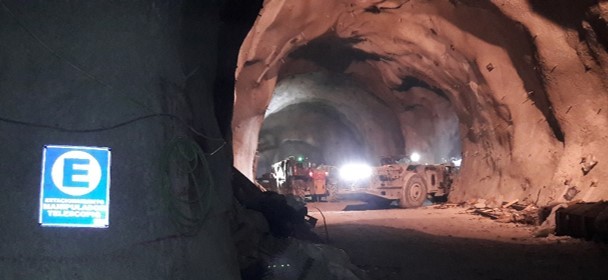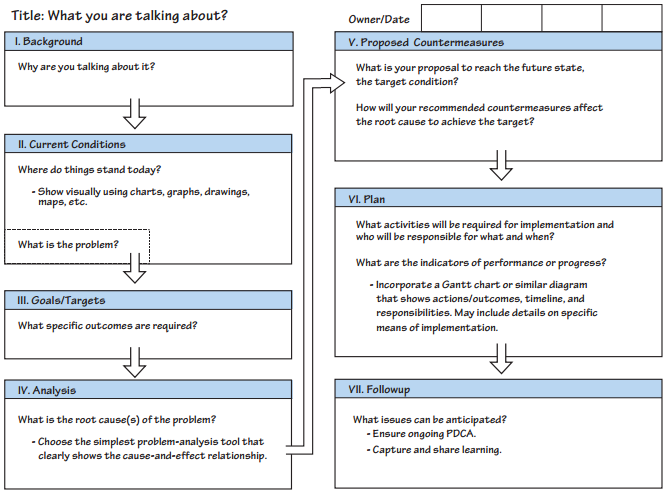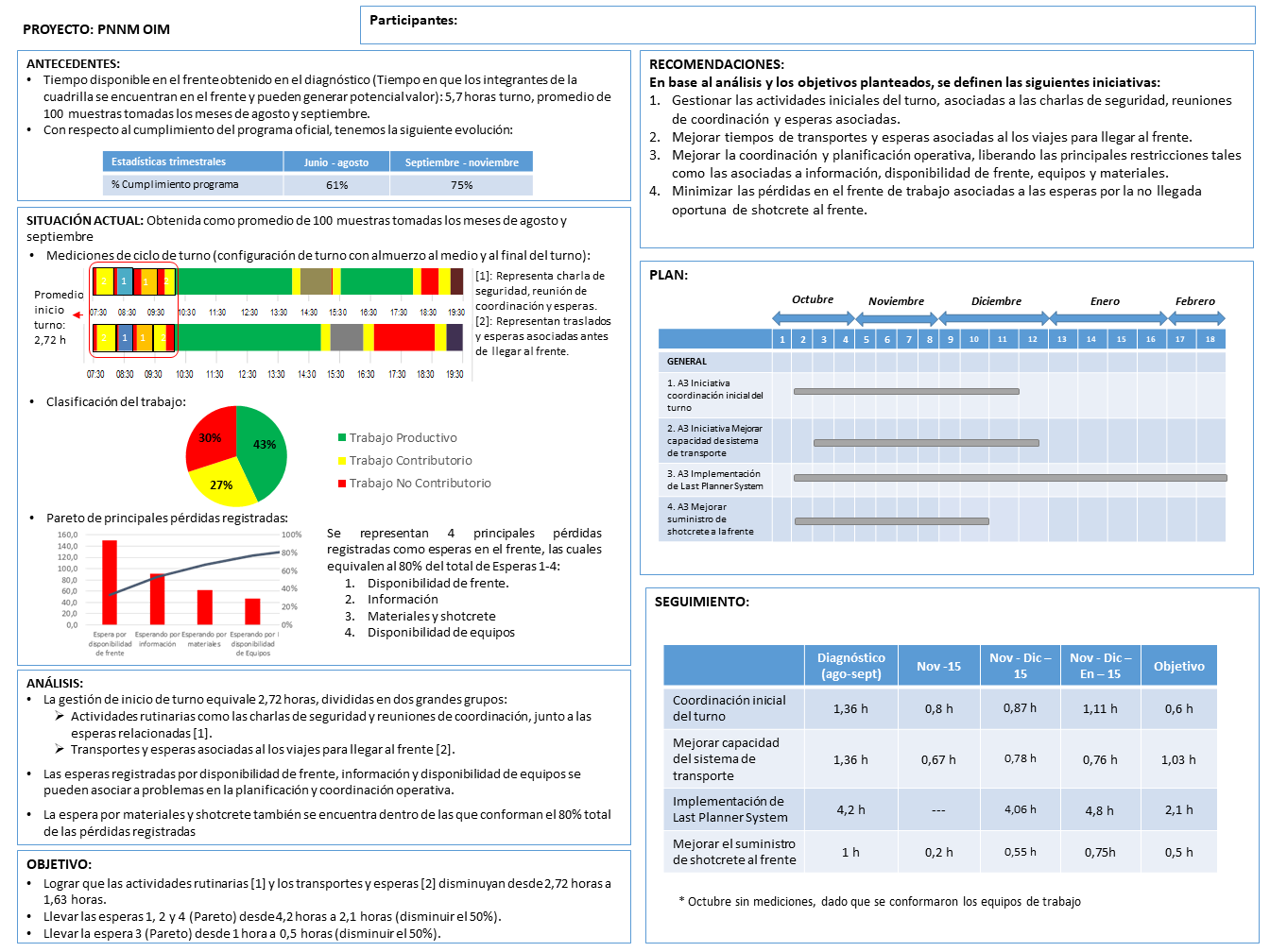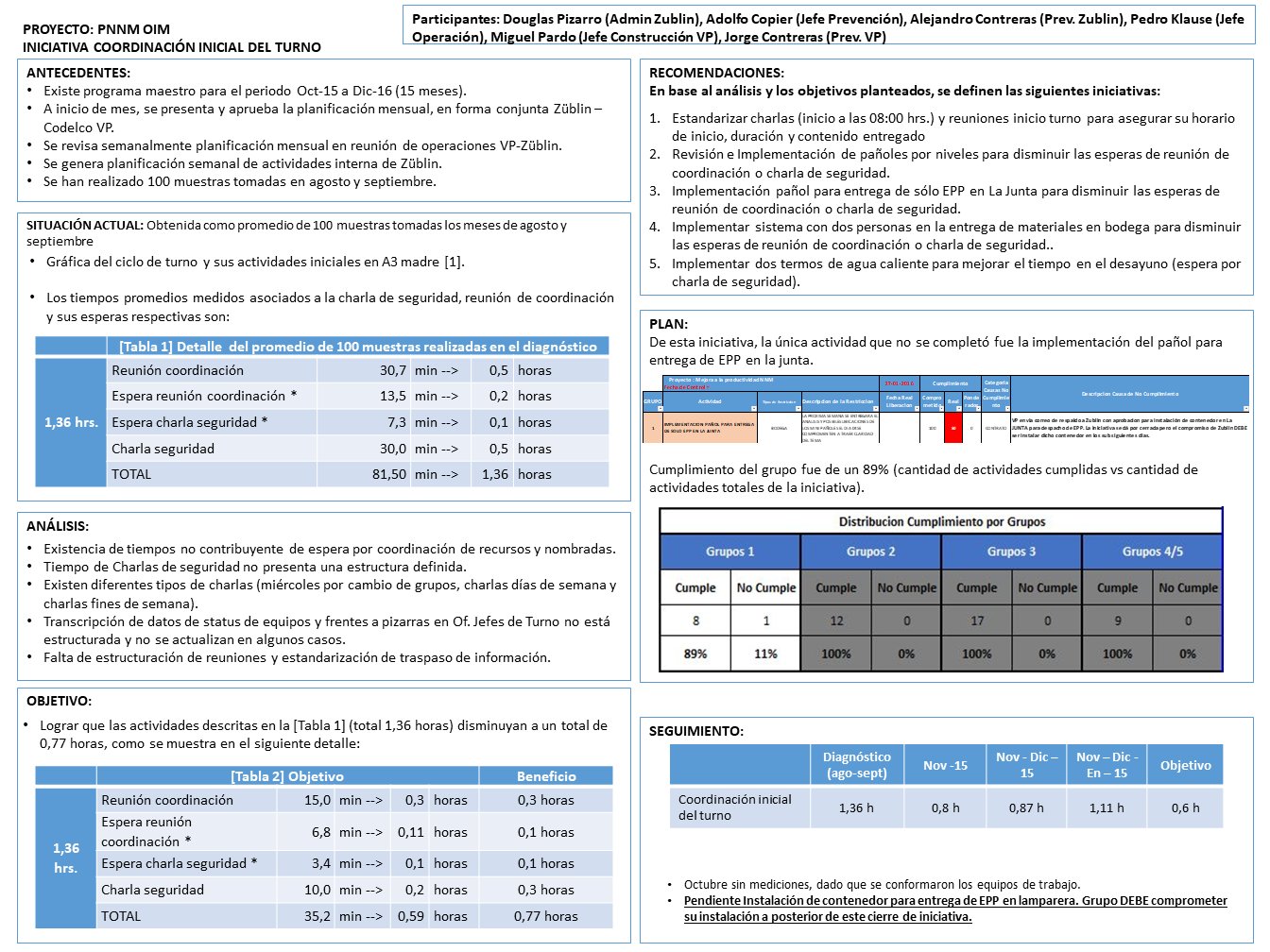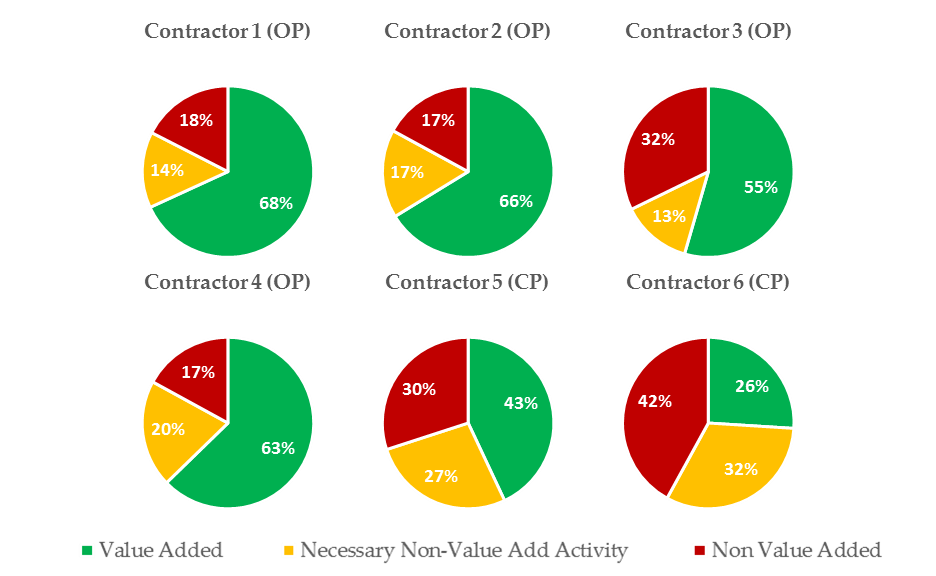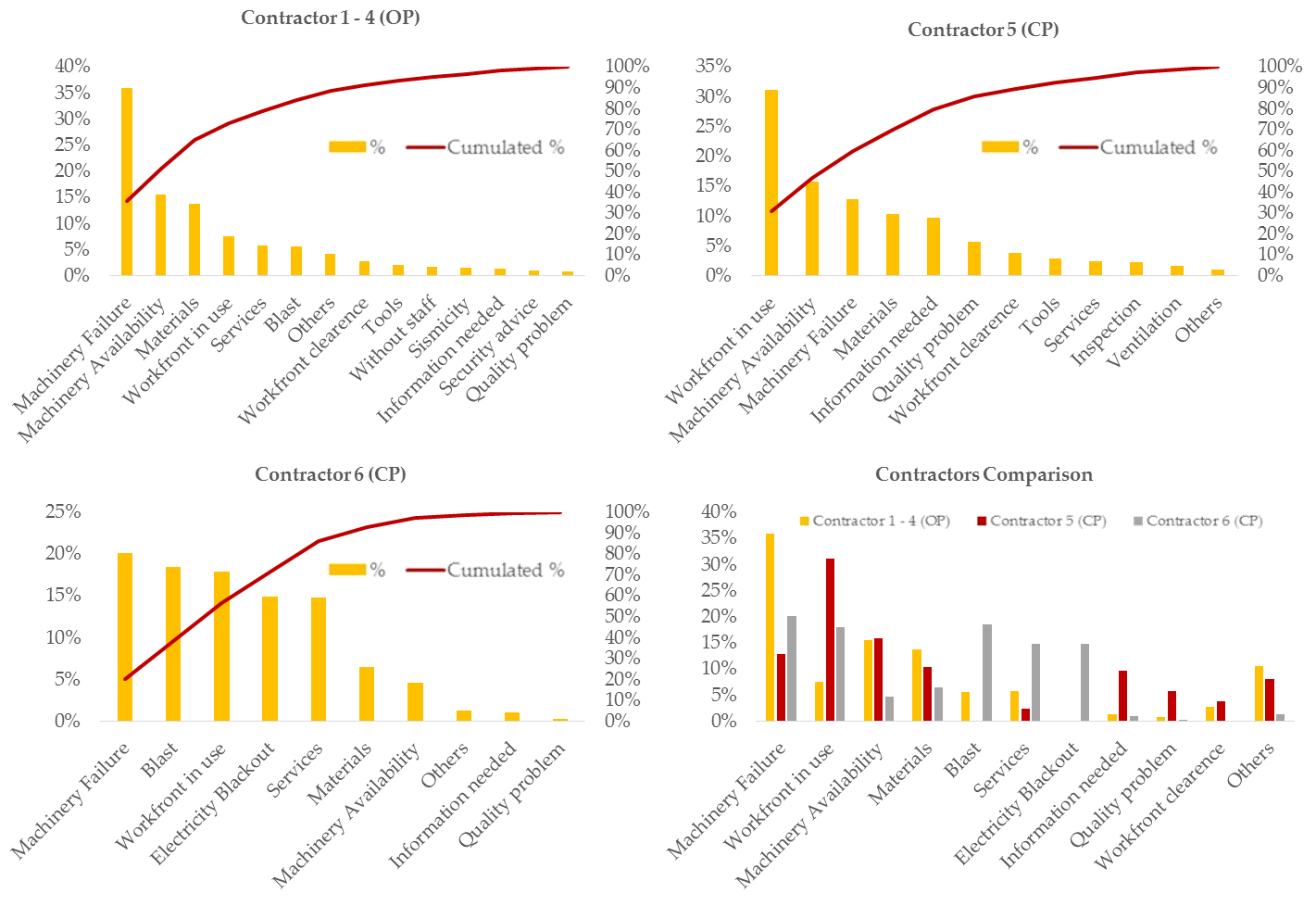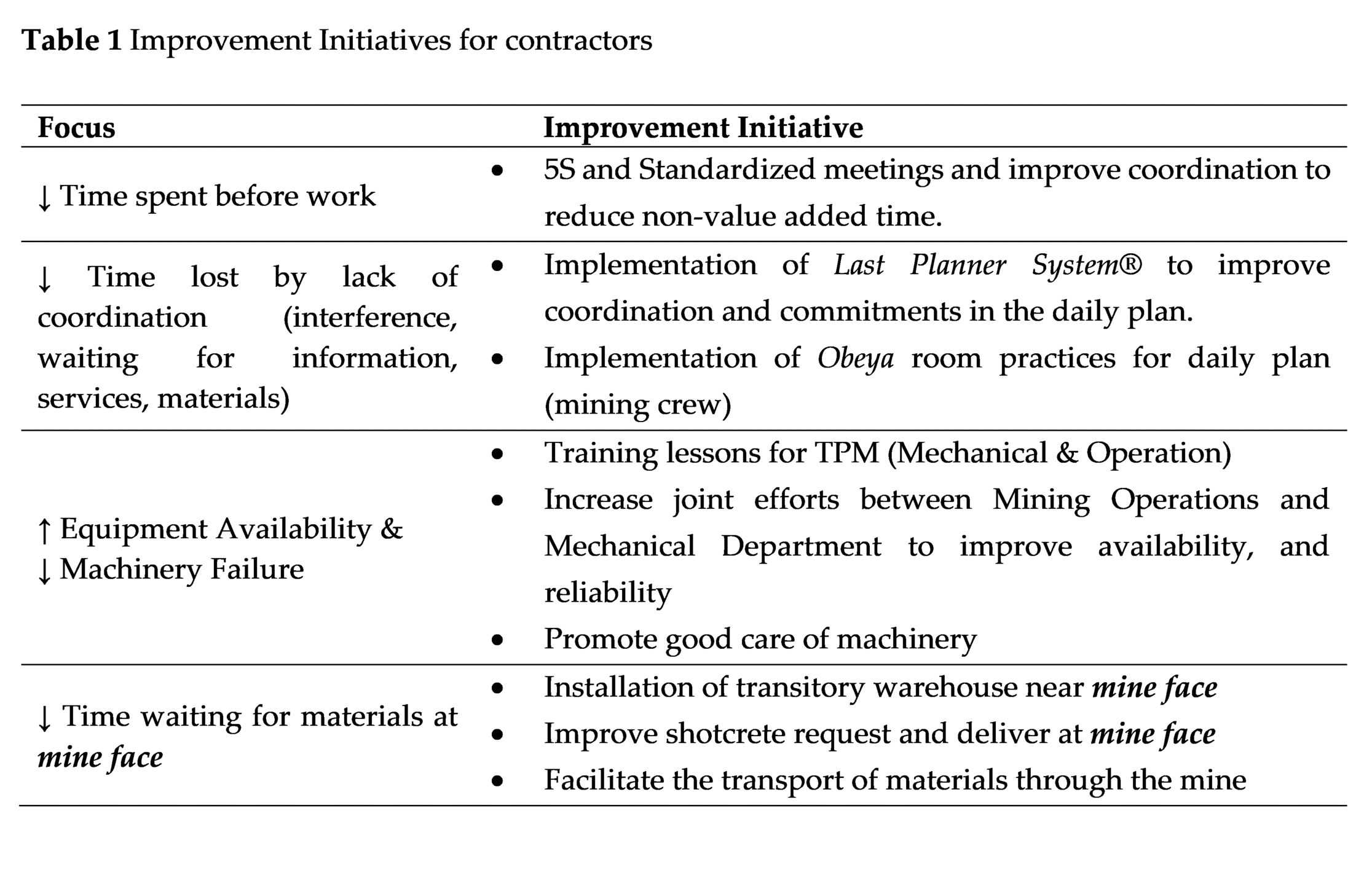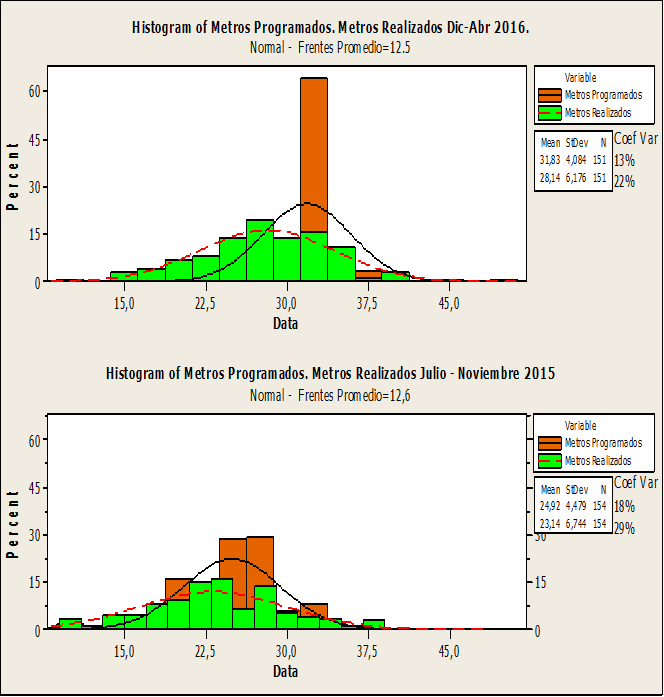Lean philosophy is known but cases of implementation in Chilean mining industries are few. This paper explores cases of Lean applications in a copper mining company under five different mining contractors: three implementations during Operation Phase (OP) and two implementations during Construction Phase (CP). This work was carried out between 2012 and 2017 in different locations. This paper will show the results of these implementations, describe the methodology and improvement actions that were taken throughout this period.
The methodology applied is aligned with Lean Philosophy and its tools. The focus was put on reducing non-productive work and maximizing the productive hours of contractor’s crew (including machinery/equipment operators and maintenance teams). The methodology follows the PDSA cycle under the following hypothesis: “wasteful activities are present within the mining cycle”. A sound Plan was made to reduce Non-Value added activities and a Diagnosis was conducted by
- Performing a Work, Motion and Time study,
- Elaborating work balance studies and analysis of non-value-added-time in the value stream.
For each contractor, a management team (Steering committee) was formed to discuss our diagnosis. Some initiatives were decided for implementation and others required a deeper analysis.
By following the A3 method (see Figure 2 A3 Standard Form) and PDSA cycle, ad-hoc teams were formed to assess each one of the initiatives. Lean tools were selected and teams were trained and coached to ensure proper implementation. All mine contractors undertook a Lean Enterprise seminar and also on-site trainings (Last Planner System, 5S, TPM, VSM, A3-Problem Solving, Kaizen).
The Study(S) step of the PDSA cycle compels to analyse the effects of our actions on each variable under examination. By following the A3 method of Problem Solving, each initiative was weekly checked on Obeya’s meetings. Teams were encouraged to take corrective measures in case objectives were not achieved.
Quick wins were obtained with the first PDSA cycle. A Lean culture always begins by people involved in continuous PDSA cycles.
Diagnosis
A time study is an accurate analysis of the wasteful activities performed in an operation. It measures the work done by a crew on each activity. A full scan of the work of the contractor was conducted, from the shift start time (arrival to the change-house) to shift end time (arrival again to the change-house).
The result is a work sheet of Value Added and Non-Value Added time (delays, waiting time, movement, man trip, etc.).
Figure 1 Time and Motion Study
A standardized sequence of a shift is shown in Figure 1 Time and Motion Study. This cyclical process is similar for all contractors except one, who performs the same activities but in a different order.
All the activities done at rock face were categorized as follows:
- Value Add (VA): Activities that transform the tunnel like Blasting, Scaling, Shotcreting, Supporting, etc. (Without considering quality problem reworks)
- Necessary Non-Value Add Activity (NNVA): Activities that must be performed for legal, regulatory or for supporting VA activities. Some examples are safety issues, meetings, tool revision, HSE reports and preparation for work (coordination, searching for materials, etc.)
- Non Value Add Activity (NVA): Activities that customers are unwilling to pay for, like idle times of any type (waiting for materials, tool, machinery, work programs, etc.).
Analysis
Every team developed an initiative following lean philosophy and applying lean tools. A3 methodology helped all teams to stay focus on the core issues affecting productivity. A3 tools, such as the standard form shown in Fig. 2, ensured that a Root Cause was found and prevented that day-to-day urgencies took out the team’s attention.
Continuous Improvement
The contractors selected for this study use «Drill&Blast» tunnelling process. The activities selected (and sub-activities) were mapped and considered in detail: Idle time, shift duration, shift start time, maintenance KPI, mining cycle time, and number of daily blasts. A diagnosis of the current situation was finished and a new tactical PDSA cycle was opened. Then, collaborative teams were formed and compromises were taken, A3 reports were created, and the follow-up meetings scheduled.
Once the implementation plan was running and the first results achieved, the next step was to focus in the «mining unit operations». The best Lean tool for this purpose is the Value Stream Map (VSM. See Figure 4 Continuous Improvement in Drill&Blast cycle
A Value Stream Map for the work at the rock face, was drawn for contractors 1 to 5 to identify more improvements opportunities within each activity. Figure 4 Continuous Improvement in Drill & Blast cycle shows a common map, but further analysis was conducted in more detailed maps for Drill&Blast (not included for confidentiality reasons).
The VA, NNVA & NVA activities, within the mining cycle (at rock face), exhibit the following distribution. Figure 5 Value added Time
Non-Value added activities at the rock face are shown in Pareto diagrams as in Figure 6 «Idling at Mine face». The graphs were similar for contractors during Operational Phase, so they are shown together.
A detailed analysis of these data helped the teams to draw the following conclusions:
- The percentage of the shift time that contractor’s teams are at rock face is 55% on average.
- Also, in a regular shift, the average time that is lost in transportation activities (not including transportation for lunch) is 22%.
- There is an average of 10%, of the total shift time, that is spent in safety and other meetings, tools gathering, etc.
The Lean initiatives, that helped to deal with the issues described above, are shown in Table 1 Improvement Initiatives for contractors.
The benefits from the implementations are shown in the following table.
Histograms (below) shows two periods: July-Nov 2015 and Dec-Abr 2016. It’s easy to see an increase in productivity and a reduction in variability of productivity (meters per day) The Var. Coef. went from 29% down to 22% (24% reduction). The graphs show an increase in average production (in «meters» of tunneling), and also a reduction in the variability of this variable (green bars). It shows that the constructor was able to Plan for more «meters» and their plan has lower variability (brown bars). All of these are signs of a more robust and productive operation.
Conclusion
This mining company is promoting operational excellence and lean practices, among its mine contractors. In fact, Lean is being introduced as part of a Strategic Plan to increase competitivity. Lean is implemented in operation as well as project activities.
Lean Principles and tools have shown a great potential when adopted in the mining industry. This paper has shown how lean helps in reducing non-value added activities and keep teams focused on increasing value added work. Also, the teamwork approach helped to involve crew members to identify and solve issues that, before lean, would have caused delays in the production cycle.
Lean philosophy is a powerful way to reduce waste and improve effectiveness, helping companies to compete. Identification and removal of wastes should become a continuous and never ending process and an important new behaviors aligned with company’s culture.
Results from the implementation in these pilot projects, with different mine contractors, indicates that great potential exists and leaders must take a closer look at the benefits of adopting these practices.
Some implementations challenges were:
- Contractor managers working very hard on short term needs and urgencies, do not help to create the proper environment to work on continuous improvement.
- Contractor’s teams struggled to follow new practices and principles. Effort was needed to keep the initiatives running properly during implementation stage.
- Ensuring that each initiative help the organization on driving a cultural change.
REFERENCES
Womack, J. & Jones, D. (1996) Lean Thinking, Second Edition, Simon & Shuster, New York.
Shook, J. (2008) Managing to Learn: Using the A3 management process, First Edition, Lean Enterprise Institute, Cambridge.
Alarcón, L. (2001) Identificación y Reducción de Pérdidas en la Construcción Herramientas y Procedimientos, First Edition, Pontificia Universidad Católica de Chile, Santiago.
Castillo, G., Alarcon, L. & Gonzalez, B. (2014) ‘Implementing Lean Production in copper mining Development Projects: case study’ J. Construction Eng. Manage., 10.1061/(ASCE)CO. 1943-7862..0000917, 05014013
Keyte, B. & Luckman, J. & Paluska, K. & Parsons, G. & Shook, J. & Shuker, T. & Verble, D. (2007) Mapping to See, First Edition, Lean Enterprise Institute, Cambridge.
Koch, L (1958) Time Studies in Underground Coal Mining, First Edition, University of Utah, Utah.

